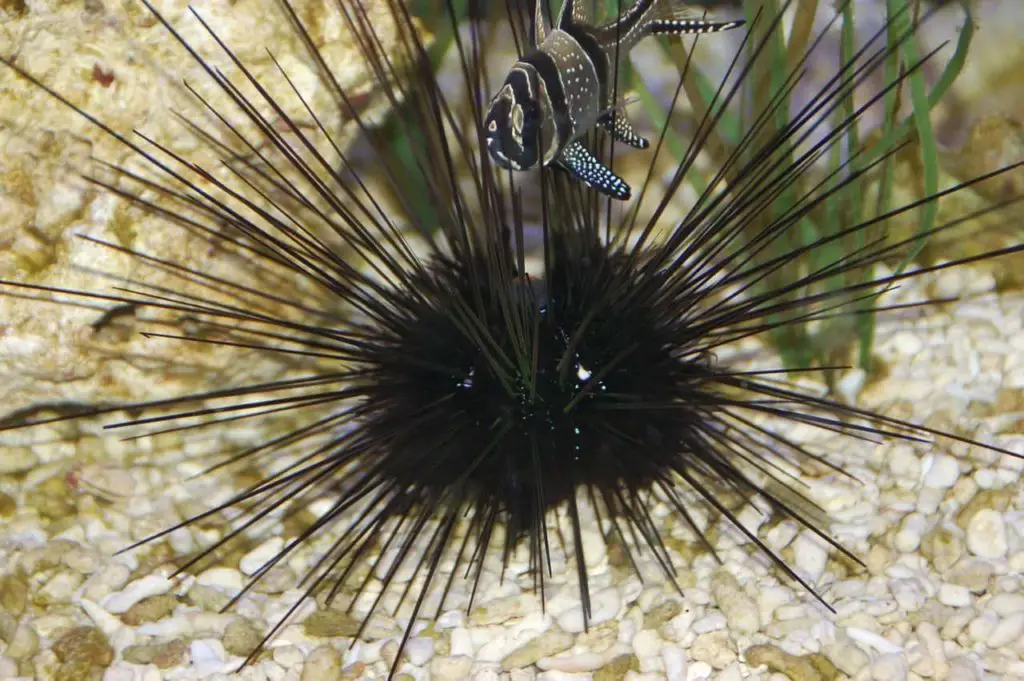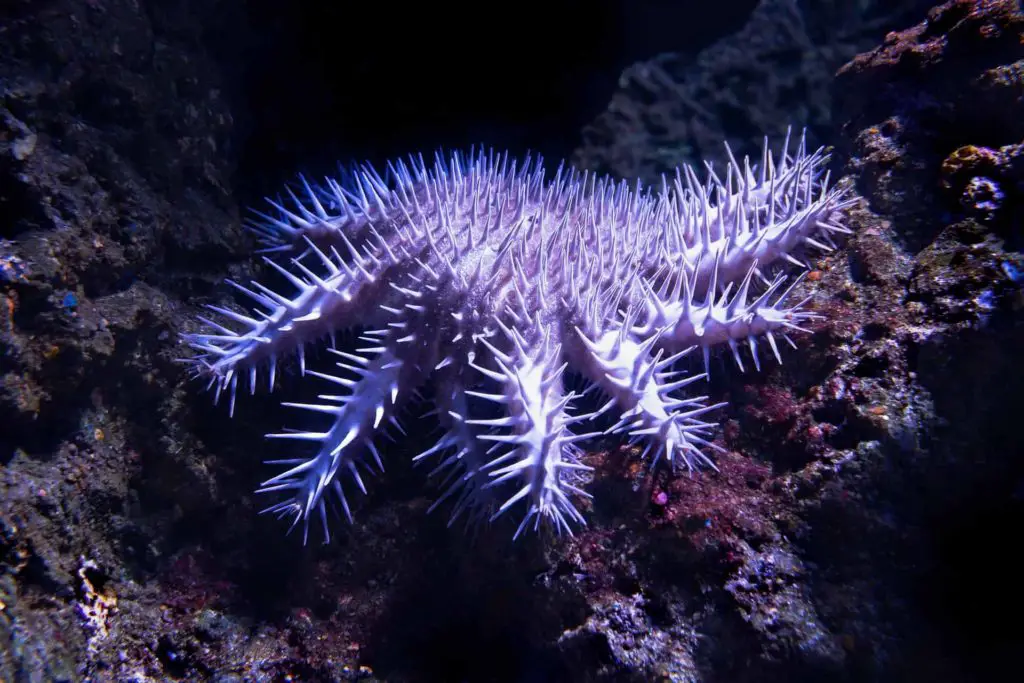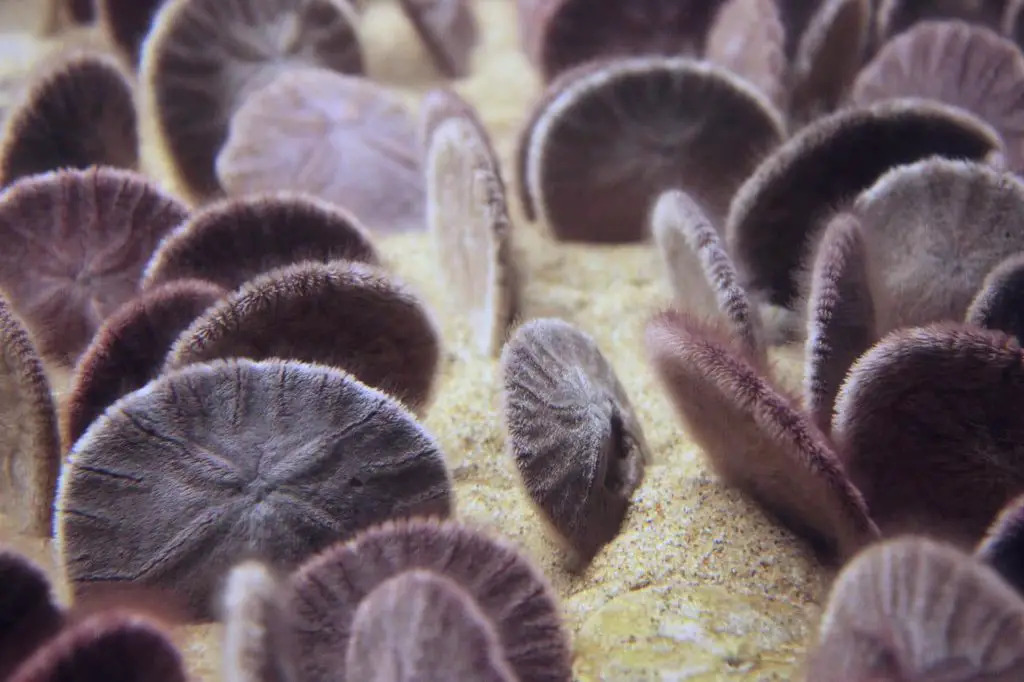Can Sand Dollars Hurt You? (Are They Poisonous?)
Have you ever looked at the sand dollar and wondered if you can pick it up without being harmed? If you know their close relatives – sea urchins, you may think twice before touching them. You may notice a few things that can be possibly harmful like their spines or even their teeth on the underside of their body. In this blog post, I’ll answer all these questions but let’s start with a quick answer:
Sand dollars are completely harmless to humans. Their spines are not poisonous or sharp, their teeth can’t bite you and the yellow substance they produce is not toxic.
However, this certainly doesn’t tell the whole story. Below I’ll explain what potential harmful signs you could notice and if they are actually harmful. Furthermore, I’ll explain how sand dollars defend themselves if they’re poisonous when eaten, and how they attack their prey.
What potential harmful signs could you notice?
Sand dollars are living animals that don’t look like dangerous species, but when you look at their close relatives from the phylum Echinodermata like sea urchins, you may start wondering if they’re actually that harmless. There are a few characteristic sand dollars’ features that may look that can hurt you. Let’s break it down and see what each of them does.
Spines
There are a few relatives of sand dollars’ that spines can really hurt us. We all know that sea urchins’ spines can be really painful. They are long, spiky, and very poisonous. There are also a few species of sea stars that spines are very harmful to us even though they are not that obvious from the first glance (ex. Crown-of-thorns starfish).



Sand dollars’ spines however are very soft and much shorter compering to their spiky relatives. They use them as a defense but in a completely different way. Spines help them to move around the seafloor and most importantly, to burrow in the sand to escape predators. They can go to about 60 cm (2 ft) so they become invisible. They also use this technique to avoid being washed out of the sand and thrown on the beach by strong currents and tides.
These marine creatures’ spines can’t hurt us because they are soft and don’t have a venomous substance inside.
Yellow substance
Sand dollars produce a yellow substance called echinochrome. They produce it for possibly two reasons. The first reason is to protect themselves from blood injuries. The studies have shown that this substance is a natural pigment that has antioxidant properties and a cardioprotective effect again those injuries.
Another reason is to defend themselves from predators. Some of their relative starfish produce a similar yellowish substance and studies have shown that it scares away their predators, for example, snails. One of the starfish called Pteraster tesselatus produces so much substance that when predators are placed in the water with this mucus, they can rapidly die.
This interesting observation may give us the reason for producing the yellow substance. Sand dollar’s substance however is completely harmless. Their way to defend themselves is burrowing in the sand instead.
This yellow substance is actually one of the signs that help us to recognize that a sand dollar we found on the beach is actually alive and we should return it to the ocean. To find out more about the difference between living and dead sand dollars, you can read my other blog post here.
Teeth
Yes, sand dollars do have teeth. But are they harmful? Sand dollars have a jaw with five tiny teeth sections that help them to grind up the sand, chewing encrusting organisms and microscopic algae. They collect individual sand grains from the sandy seafloor and use their sticky tube feet and mucous-filled channels to slowly move food to the mouth opening that is located in the center of the flower-like shape pattern on the bottom of their body.

Sand dollar’s teeth can’t bite you and they use their teeth only to grind up sand.
After describing all potential harmful signs we came to the conclusion that no, sand dollars are completely harmless to humans. They don’t have poisonous spines, their teeth can’t bite you and the yellow substance they produce is not toxic.
How do sand dollars defend themselves?
So how do sand dollars actually escape predators? I mentioned above one way to do but they have another method that is very interesting and worth mentioning.
Burrowing in the sand
As I mentioned previously, sand dollars in order to escape predators, burrow themselves in the sand. This method makes them completely invisible as they go to about 60 cm (2 ft). They use their spines to dig and if you’d like to find out more about how they do that, you can read my other blog post about how sand dollars move.
If sand dollars are unable to burrow themselves properly, they may get taken away by the current and wash ashore, which is how white sand dollars are made.
Cloning
Their other strategy to avoid being eaten alive is actually cloning themselves! This remarkable skill is based on the mutable properties of their connective tissue. In the sand dollar case – only the larvae can reproduce this way. A few years ago biologists discovered that a sand dollar larvae can clone itself in response to the presence of the fish mucous – a signal of predators. This way they are a less obvious target as the copied larva is about half the size of the original one.
Are sand dollars poisonous when eaten?
Because sand dollars don’t produce toxic substances, they are not poisonous when eaten by their predators. Predators of sand dollars are seagulls, cod, flounder, sheepshead, haddock, crabs, sea stars, and octopuses.
How about humans? Sand dollars have hard skeletons covered by short spines all over their body that fall off after they die. This means that they have very few edible parts (if any) that don’t make it worth eating. It’s also worth knowing that taking live sand dollars is mostly illegal and regulations may vary depending on the region.
Most of the time, taking dead sand dollars is legal in the places that they are found but it’s good to check if there are any signs on the beach or ask employees who work there. Sometimes there are restrictions about the number of sand dollars you can collect in one day.
Are you curious about why sand dollars are called sand dollars? Read this blog post I wrote earlier.
How do sand dollars attract their prey?
As I mentioned sand dollars mostly eat detritus (dead particulate organic material), planktons, crustacean larvae, and debris from the seafloor. They don’t have to attract to get food but how do they eat then? They developed two different feeding strategies that depend on conditions and species.
Deposit feeders
The most popular strategy is developed by sand dollars that are deposit feeders. They collect individual sand grains from the sandy seafloor and use their sticky tube feet and mucous-filled channels to slowly move food to the mouth opening that is located in the center of the flower-like shape pattern on the bottom of their body.
Suspension feeders
One of the sand dollar species on the West Coast of California called eccentric sand dollar ( Dendraster Excentricus) developed a different feeding strategy – suspension feeding. It uses its spines to push up and flip onto its front edge. By “standing” vertically, it’s exposing both the top and bottom of its test to the passing water, which helps it to more easily grab tiny bits of food.

Unlike the other species, it can eat food caught on either its top or bottom surface. So far, it’s the only sand dollar species discovered to feed this specific way. This shows us how animals are able to adapt to new environments, making sand dollars one of the most interesting sea creatures. If you’re interested in reading more about how sand dollars eat, check out my other blog post when I talk all about that.
Resourses
You may also like:

Welcome to Bubbly Diver!
I’m glad to see you here. This blog is created for all marine creature lovers by a bubbly diver - me, Dori :)


